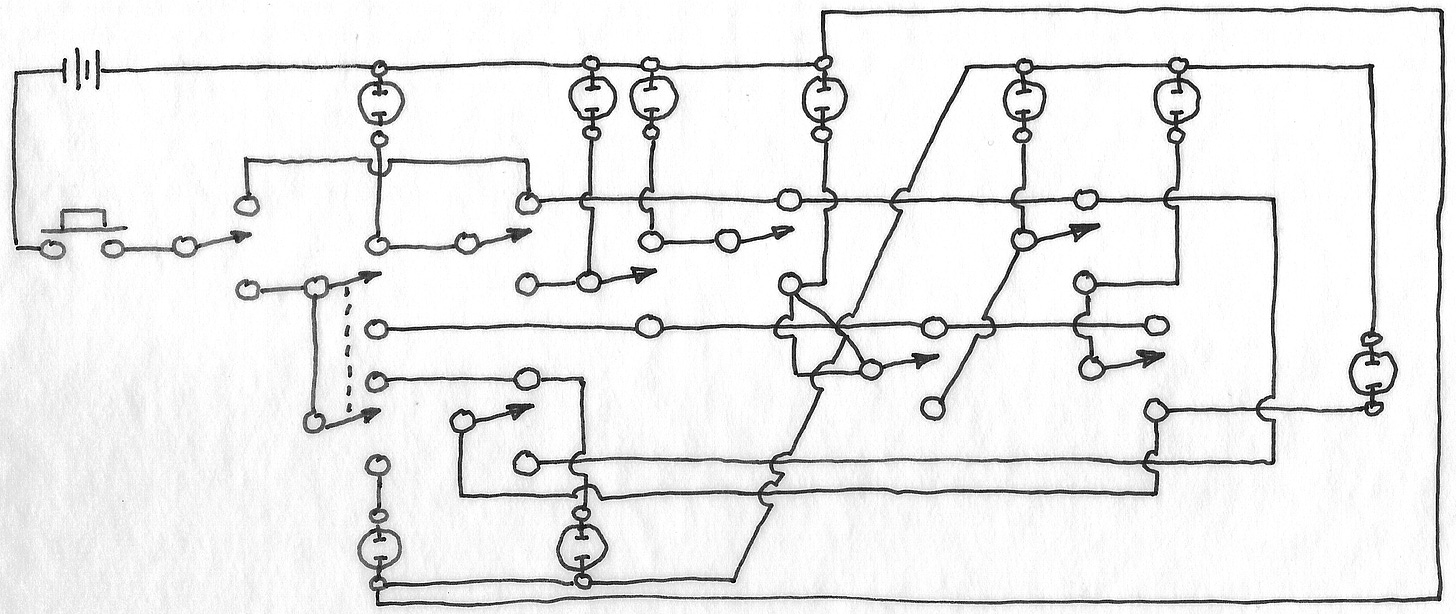Conditional Relationships
ANOTHER ASIDE. It is, I think, quite possible that during the next several years, the most important part of our education came from learning to follow Mr. Simone’s schedules, with their complex branchings … alternative paths … and dependent relationships …
Little Follies, “Take the Long Way Home”
All of the examples that Peter supplies are, broadly speaking, conditional relationships. These diagrams show the logical process (from Wikipedia, “Conditional [computer programming]”):
In early programming languages, especially some dialects of BASIC in the 1980s home computers, an if–then statement could only contain GOTO statements (equivalent to a branch instruction). This led to a hard-to-read style of programming known as spaghetti programming, with programs in this style called spaghetti code. As a result, structured programming, which allows (virtually) arbitrary statements to be put in statement blocks inside an if statement, gained in popularity, until it became the norm even in most BASIC programming circles.
This is Peter’s schematic diagram of the “brain game” that he built during his summer in New Mexico at the Summer Institute in Mathematics, Physics, and Weaponry at the New Mexico Institute of Mining, Technology, and Pharmacy:
Flying, “Flying Home”
It is indisputably true that the generation of students who learned to follow Mr. Simone’s schedules or others like them has produced a large number of adults who are remarkably adept at writing long and intricate computer programs and long and intricate sentences that establish relationships among ideas so widely separated that one wouldn’t have imagined that a chain of reasoning could have been forged long enough to link them. I think that there is a cause-and-effect relationship in there somewhere.
Little Follies, “Take the Long Way Home”
I WASN’T IN THE CROWD that gathered to watch the Nevsky Mansion burn, because I hadn’t been born yet, but if, on a September night, when the weather cools suddenly and the haze of summer drops as dew onto autumn’s lawns, leaving the night air clearer than it has been for months, so that the moon illuminates my insomniac hours like a searchlight, with a brilliance quite unlike the phosphorescent softness of summer moonlight, I happen to see sweet autumn clematis growing on a wall, I am reminded of all the stories I’ve heard about the night the mansion burned, and I’m also reminded of other nights, certain wonderful autumn nights when I was a boy, nights when I scaled the walls of the Glynns’ stone house and slipped into bed with Margot and Martha, those scented nights I spent abed with twins.
At Home with the Glynns
[more to come on Thursday, December 30, 2021]
Have you missed an episode or two or several?
You can begin reading at the beginning or you can catch up by visiting the archive or consulting the index to the Topical Guide.
You can listen to the episodes on the Personal History podcast. Begin at the beginning or scroll through the episodes to find what you’ve missed.
At Apple Books you can download free eBooks of “My Mother Takes a Tumble,” “Do Clams Bite?,” “Life on the Bolotomy,” “The Static of the Spheres,” “The Fox and the Clam,” and “The Girl with the White Fur Muff,” the first six novellas in Little Follies.
You’ll find an overview of the entire work in An Introduction to The Personal History, Adventures, Experiences & Observations of Peter Leroy. It’s a pdf document.





